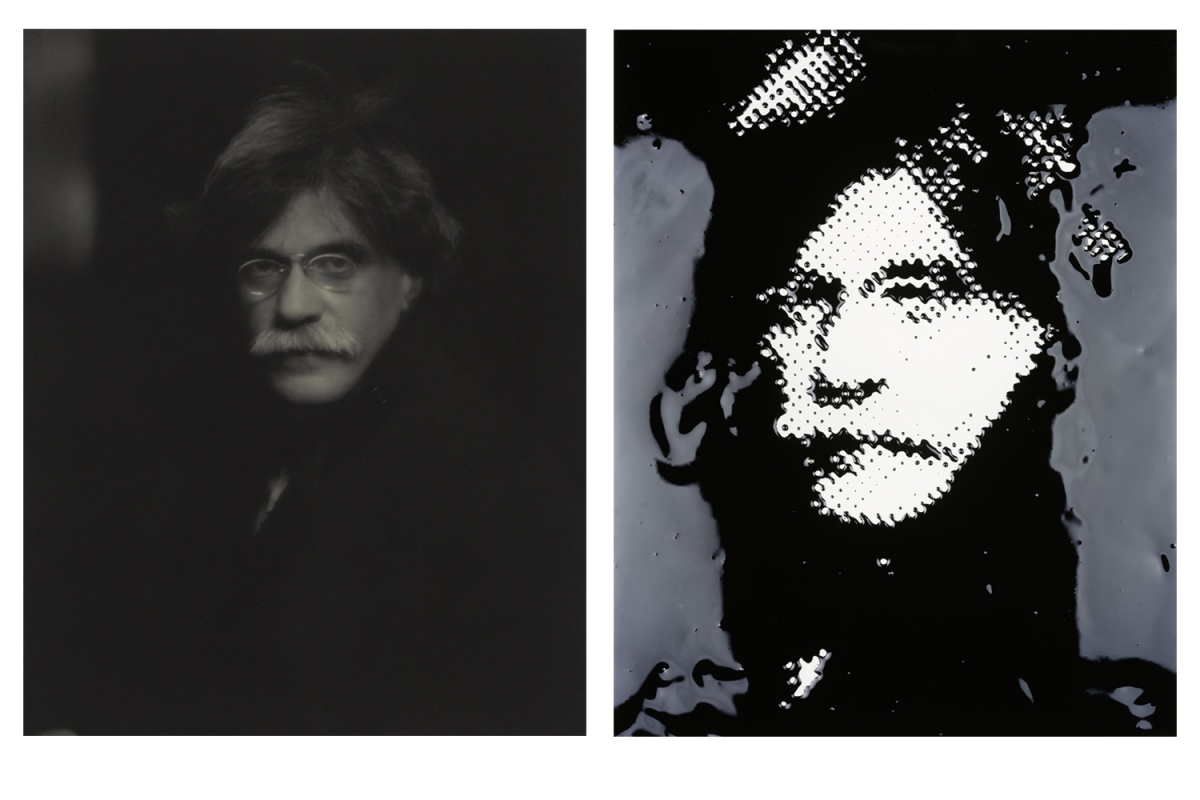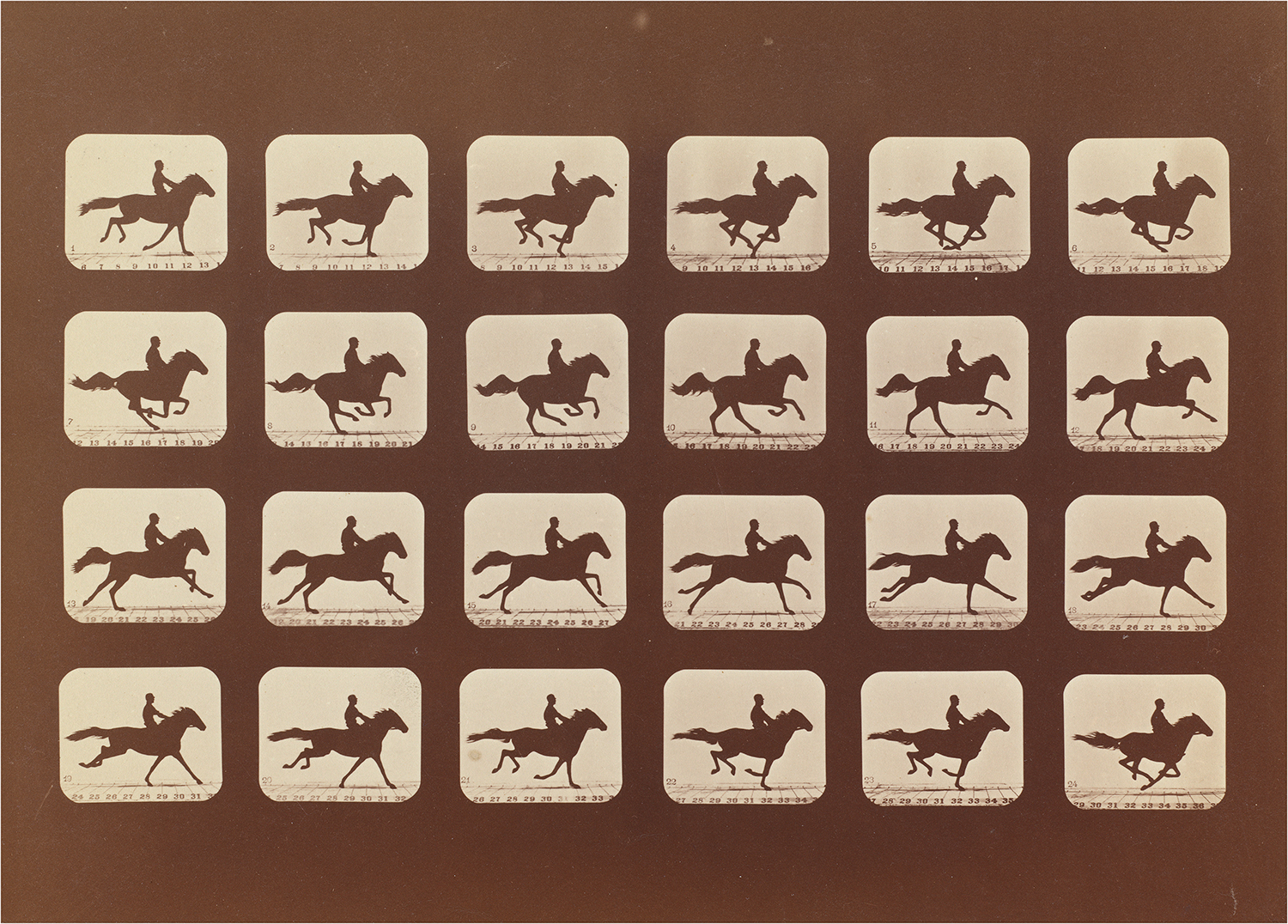By Menecham Wecker
At first glance, the 24 photos in Eadweard Muybridge’s 1879 “Horses. Running. Phyrne L. No. 40,” from the series “The Attitudes of Animals in Motion,” appear to be illustrations of a silhouetted horse and rider. It takes a closer look to notice the revelation in the fifth photograph: All four of the horse’s legs have left the ground simultaneously mid-gallop.
Per legend, the photo settled definitively a $25,000 wager -- a hefty sum in the 1870s -- in favor of Mr. Muybridge’s sponsor. Scholarly consensus dismisses the bet as mythology, but it is true that the photographer had to put the series on hold while he stood trial for murdering his wife’s lover. And after his acquittal, he left town for some five years.
The work, with all of its real and legendary intrigue, appears in the National Gallery of Art’s exhibit “Intersections” (which opened May 29 and will run until Jan. 2, 2017) of photographs and videos from the gallery and the former collection of the Corcoran Gallery of Art. It’s one of many works by Mr. Muybridge in the exhibit, which is no coincidence.
The acquisition, beginning in 1887, of nearly 700 Muybridge prints “initiated [the Corcoran’s] early interest in photography,” said Sarah Greenough, senior curator of photographs at the National Gallery, at an exhibition preview. The National Gallery’s 1949 acquisition of more than 1,600 works by Alfred Stieglitz “launched the photography collection here at the National Gallery,” which makes the two artists “founding fathers” of the respective photography collections, Dr. Greenough added.
 Left: Alfred Stieglitz
Left: Alfred Stieglitz
Self-Portrait, probably 1911
platinum print
image: 24.2 x 19.3 cm (9 1/2 x 7 5/8 in.)
sheet: 25.3 x 20.3 cm (9 15/16 x 8 in.)
National Gallery of Art, Washington, Alfred Stieglitz Collection
Right:
Vik Muniz
Alfred Stieglitz (from the series Pictures of Ink), 2000
silver dye bleach print
image: 152.4 121.92 cm (60 48 in.)
framed: 161.29 130.81 5.08 cm (63 1/2 51 1/2 2 in.)
National Gallery of Art, Washington, Corcoran Collection (Museum Purchase with funds provided by the FRIENDS of the Corcoran Gallery of Art)
“Intersection,” which is divided into the sections movement, sequence, narrative traditions, the studio and identity, is “designed to show how the two collections dovetail one another,” Dr. Greenough said. “As I think you’ll see in this exhibition, great art thrives when it is seen in a new light, and placed in dialogue with new companions, eliciting new ideas and new revelations.”
One such dialogue occurs between the adjacent works Mr. Muybridge’s “Plate Number 188. Dancing (fancy)” (1887), from the Corcoran collection, and Alexey Brodovitch’s “Untitled, from ‘Ballet’ series” (1938), from the National Gallery collection.
In the former, Mr. Muybridge captures a 12-photograph sequence of a woman in a white dress dancing. The other photograph, by Mr. Brodovitch, who was art director of Harper’s Bazaar, depicts a dancer frozen in motion while performing a 1938 choreography for Beethoven’s Seventh Symphony.
Philip Brookman, consulting curator in the National Gallery’s photography department and former chief curator at Corcoran, noted that Mr. Muybridge’s works almost didn’t make it into the Corcoran collection. The artist visited the museum in 1887 after having twice had his works turned down to make a presentation. The third time, evidently, was the charm, and so began a longstanding focus on photography.
“The museum began collecting photographs long before most other museums did,” Mr. Brookman said.
The National Gallery was much later to the scene -- only beginning to collect photographs 26 years ago. That worked out well, Dr. Greenough said, as the National Gallery collection is rich with late 19th and early 20th century photographs, while the Corcoran collection held more impressive contemporary works.
“We didn’t overlook it entirely,” she said of contemporary photography, “but it wasn’t a high priority until the last 10 years or so. Fortunately, that’s where the Corcoran’s collection of photographs and videos was strong.”
The process of going through the more than 5,900 photographs and videos in the Corcoran collection was revelatory for National Gallery curators. “As we in the department of photographs opened box after box of photographs, it was a bit like opening presents on Christmas morning,” Dr. Greenough said. “We discovered that our two collections are wonderfully different from one another.”


